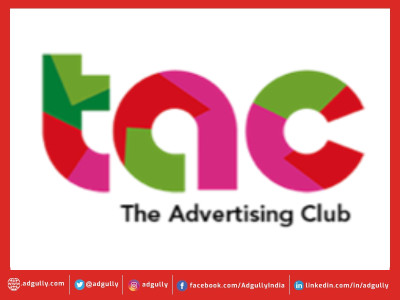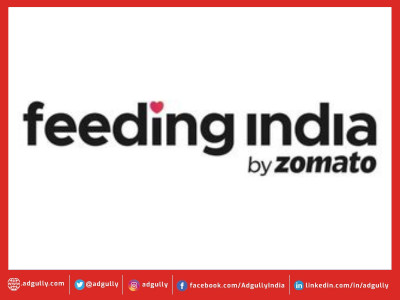Why branding & performance marketing are viewed as distinct strategies in the mktg mix?
Understanding the customer journey in depth and how they engage with your brand was unheard of in the pre-digital era. To visualise the customer journey, American advertising advocate Saint Elmo Louis came up with the concept of a marketing funnel, defining six stages that a customer went through – awareness, consideration, intent, purchase, loyalty, and advocacy.
Louis came up with this framework in 1898 and it influenced marketing practices well into the 21 century. However, modern marketing science and digital marketing have all but done away with this out-dated way of thinking about the customer journey in favour an integrated marketing approach.
The reality is that a customer’s journey is far more complex. The visualisation below is only a representation of the customer journey on an e-commerce platform, however, with a multitude of touch points the journey both offline and online and knowing that customer has leeway to jump forward, backward and even skip certain stages as well as the amount of time spent in each phase reveals the inadequacy of Louis’ framework.
The marketing funnel framework lays emphasis on top funnel awareness, which means that the general viewpoint was that a business needs to buy more ads if they want to drive more customers through the funnel. Even if we consider this theory to be true, if we take this to the logical extreme ad campaign budgets would need to be bigger and bigger. And that’s what happened in the 20th century with print, radio and eventually television advertising.
Today, digital marketers prefer to nudge customers along the purchase journey at key touch points where they interact with the brand. Prasad Shejale, Founder & CEO, Logicserve Digital, explains, “Today’s market is much more complex, and consumer journeys, as well as consumer touchpoints, are more complex and interconnected. The consumer not only has the choice of services/ products, but also has the choice of how and where to interact with a brand’s communication. They travel across online and offline as well as the awareness to advocacy phase in a matter of seconds. This is because of the integrated channels and also depends on their last interaction with a brand or their messaging.”
According to Rubeena Singh, CEO, iProspect, “Traditional media agencies leave a lot of value on the table when delivering a brand. We no longer exist in an ecosystem where these elements can be planned and bought separately. This change has been accelerated in the post-pandemic world, where consumers and clients are thinking digital-first.”
As per the ‘dentsu Digital Report’, the digital advertising industry grew by 15.3% to reach Rs 15,782 crore by the end of 2020. Further, digital media is expected to grow at 20% to reach a market size of Rs 18,938 crore by 2021. As of now, digital is only 30% of the advertising spends. Out of this, about a third is Paid Search.
Commenting on the findings of the report, Singh observes, “So, in effect brands spend on an average 6-7% off their overall marketing spend on Performance marketing (The rest is all brand). E-commerce, BFSI, Auto, Retail and Consumer Durables are the large spenders on Performance marketing, spending approximately a third of their digital marketing budgets on performance.”
High consideration brands have been early adopters of performance marketing to drive the customer through the mid and bottom funnel. But performance marketing has always been leveraged tactically by marketers and demand generation is still left to high decibel campaigns.
“Unless you address the top of the funnel in marketing, which is awareness, you can never reach the bottom of the funnel, which is to acquire a customer. Data, technology and all the variables in performance marketing emanates only after enough awareness is built,” remarks Rammohan Sundaram, Country Head & Managing Partner – Integrated Media, DDB Mudra Group.
He further adds, “The validation of the same is the fact that even Google capitalises on to ensure it delivers the right performance. Every search on Google is the first aspect of awareness before data and technology kicks in to build on through the search results, which enable the awareness post which the contextual engine kicks to deliver relevant search ads.”
So, eventually the six-stage framework of the marketing funnel has been condensed to two stages – that is, awareness where media spends is focused on traditional media, and conversion and purchase where growing share of media budgets are going to performance. Data-driven performance marketing, however, can now be applied much more effectively to branding and demand-generation activities.
Singh opines, “As the world becomes more connected, I don’t believe in separating Brand and Performance. Growth lies at the intersection of brand and performance because all advertising is about performance; all advertising can and should build brands and drive growth.”
Unmisha Bhatt, Chief Strategy Officer, Tonic Worldwide, reflects, “Marketers have heard and seen case studies of D2C (Direct To Consumer) Brands leveraging performance marketing at its best and seeing exponential results and hence, are inspired from there on leveraging performance marketing, not realising that its short term gain versus long term demand generation/ pull.”
“The impatience and performance pressure on sales and business in the given environment and expectations from digital, leading to performance has led to the blurred lines between performance marketing and brand building. With increased spends on digital, unfortunately all people think of is RoI being sales, it is time to see digital as any other medium which is equally important and impactful for brand building and, in fact, in today’s times even more important considering the amount of time people are spending on digital,” Bhatt adds.
Marketers also have to consider that for younger audiences (Gen Z and Millennials), digital has become their earliest point of contact even as early as the age of six.
Sundaram explains, “A whole lot of new consumers being on boarded on the internet with video at the centre of the offering, OTT Apps play a big role in brand building with the new consumers and, therefore, the segmentation happens depending on the budget. If a brand is looking at Tier 2 markets, then video and voice play a big role in building top of the funnel awareness, which will be actionable brand building by nurturing and educating the consumer to build the right amount of affinity, however, that might not be necessarily the same where there is enough awareness. Therefore, the whole budgeting in a plan has direct outcome from what an objective of a campaign is. So, in a growth driven environment with more consumers coming from Tier 2 and 3 towns, brands typically look at 60:40 a ratio favouring performance.”
Unsurprisingly, the outlook of many digital marketers has been to approach performance driven marketing with a different mindset. The impact of digital media has been that it has fused the silo-ed or fragmented media ecosystem into a single long pipe/ funnel. That’s what integrated is all about.
“Marketers will need to fuse existing capabilities such as brand building, strategic planning, business intelligence, marketing activation and performance optimisation to accelerate growth,” states Singh.
Data is bridging a lot of uncertainty that usually went hand in hand with demand generation activities. The popular adage – ‘half my advertising spend is wasted; the trouble is, I don’t know which half’ – may not be applicable anymore.
“Having your business online will yield better performance marketing results. If you are still relying on old fashion retail sales only and don't have a digital store yet, performance marketing won’t be as effective. In fact, the next steps would be to not just start distribution online via e-tail giants but also build your own e-comm destination to ensure first party data collection and enable better experiences for consumers with richer data joining the dots on omni-channel marketing,” according to Bhatt.
A business calamity, where marketing budgets are first to be slashed and every dollar spent on advertising is scrutinised, may be the nudge marketers to adopt judicious demand generation initiatives.
“FMCG brands were struggling a few years ago on the decision to invest in e-commerce given the unit price of individual products versus the investment of building the e-commerce channel, however, the pandemic has helped them see the relevance of building the channel and focusing on e-commerce too,” Bhatt concludes.





















Share
Facebook
YouTube
Tweet
Twitter
LinkedIn